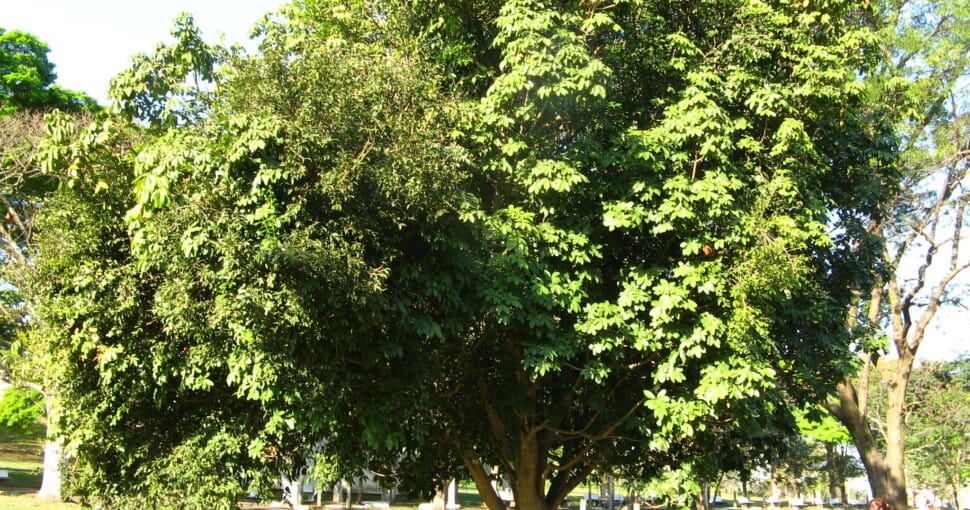It is said that a man was in financial need and prayed for money. He found the seeds of an unusual plant and proceeded to make money by selling the plants he grew from these seeds. The name money is derived from this tale.
Contents
Plants sold as money trees may be either Pachira glabra or Pachira aquatica. More common names for these trees in the Malvaceae plant family are Malabar chestnut, Saba nut, French peanut, or lucky tree. In their native habitat, money trees grow in tropical wetlands or swampy areas. Money trees originate from Central and South America but can be found in homes worldwide today.
The money tree plant has become a popular addition to many homes, and with good reason. The compound leaves of the money tree are glossy and shaped like a hand. The plant is excellent as a bonsai plant, potted indoors, or as an addition to the garden. The compound palmate leaf comprises five to nine leaflets, each measuring five to ten inches.
The money tree does not often bloom indoors, but you may be rewarded with an unusual cream-colored flower in the garden. Money tree’s large flowers have five petals shaped like a peeled banana and can each measure almost twelve inches. Inside these petals are roughly two hundred and fifty red stamens that resemble a powder brush. These blooms open at night and are pollinated by fruit bats.
If you love the beauty of a money tree, you may also like some other plants that look similar.
1. Umbrella Tree
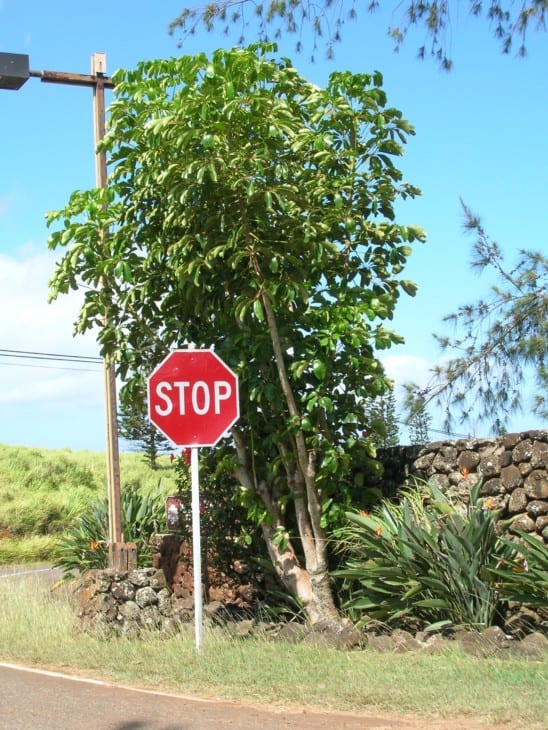
Umbrella trees (Schefflera actinophylla) are native to the Pacific, Australia, New Guinea, and New Zealand rainforests. Umbrella trees are called octopus, Queensland umbrella, or Amate. Umbrella trees are part of the Araliaceae plant family, which comprises roughly a thousand five hundred species.
The umbrella tree may grow fifty feet tall in their natural rainforest and riverine forest environments. This is similar to money trees that reach a height of sixty feet in the wild. Grown indoors, generally grow around eight to ten feet tall. You can moderate the size of umbrella trees through pruning.
Like money trees, umbrella trees have a compound palmate leaf of five to twelve lance-shaped leaflets. Leaves of younger plants contain fewer leaflets than more mature plants. Young umbrella tree plants are often planted close together in a pot and braided while the stems are pliable.
Related: 6 Plants That Look Like Umbrellas
2. Silk Floss Tree
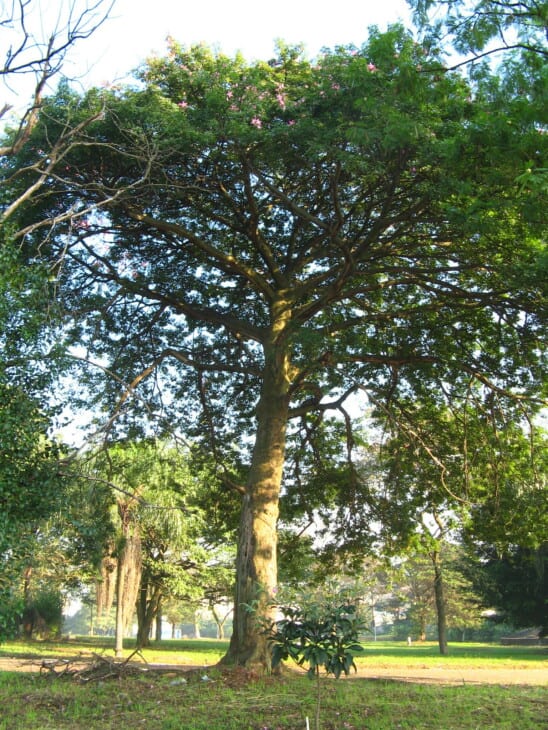
A silk floss tree (Ceiba speciosa) is often called a pink floss silk tree or kapok tree. Silk floss trees are native to tropical and subtropical forests of South America. These fast-growing deciduous trees make delightful showy garden trees or interesting bonsai trees. In tropical forests, they can grow as tall as eighty feet, but thirty to sixty-feet-high trees are more readily seen.
The Silk floss tree has palm-shaped compound leaves similar to the money tree, with each leaf composed of between five and seven leaflets. The flowers of the silk floss tree are not as large as a money tree, and the five-petaled flowers are bright pink with a cream-colored center.
Like the money tree, silk floss trees bear large fruit that measures roughly eight inches. The seeds differ entirely, though. The silk floss tree produces bean-sized seeds attached to silky threads that help to disperse the seeds. These silky fibers are used as stuffing for pillows and winter jackets, while the seeds are used to make cooking oil.
3. Trumpet Tree
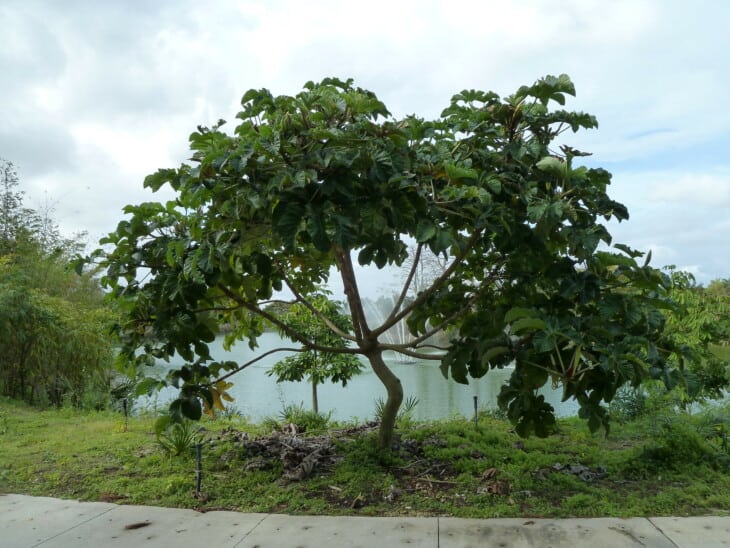
Trumpet trees (Cecropia peltata) are known by names like trumpet wood, snakewood, or pumpwood. This member of the Urticaceae plant family is fast-growing and native to humid tropical regions of South America. Trumpet trees grow as much as six feet per year to a height of roughly fifty feet and form an umbrella-like canopy.
As with the money tree, the leaves of the trumpet tree are palmate and divided into seven to ten lobes. The leaves can grow as big as twenty-four inches across, but on average, they are about eight inches big. The upper surfaces of trumpet tree leaves are bright green, but the undersides are covered with fine hair, making them silver grey.
The name trumpet tree relates to the use of this tree’s wood to make musical instruments like flutes and guitars. The bark from the trumpet tree is also used to produce a rope or string used for bowstrings.
Trumpet tree fruit is edible, and all parts of this tree serve as a food source for insects, birds, and mammals. The leaves of the trumpet tree are a popular food source for sloths in their natural habitat.
4. Chaste tree
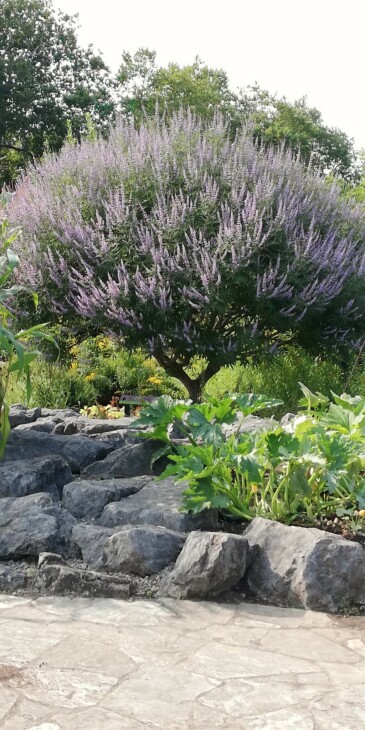
The chaste tree (Vitex agnus-castus) goes by common names such as monk’s pepper, lilac chastetree, and chaste berry. The chaste tree is native to parts of Asia and the Mediterranean but is now a commonly grown garden plant in warm and temperate weather regions.
While chaste tree leaves are smaller than money tree leaves, the shape is similar. Chase tree leaves are palmately compound, with five to seven lance-shaped leaflets making up the leaf. Chaste tree grows about twenty feet tall and is popular in gardens because of their purple flowers.
The chaste tree is an excellent addition to the garden as the flowers add color and attract butterflies. The beautiful blooms cover the tree from early spring until early fall. The flowers are attractive and fragrant, adding to this plant’s appeal. Chaste tree plants are often grown for medicinal purposes, with all above-ground parts being used.
5. Five Finger Tree
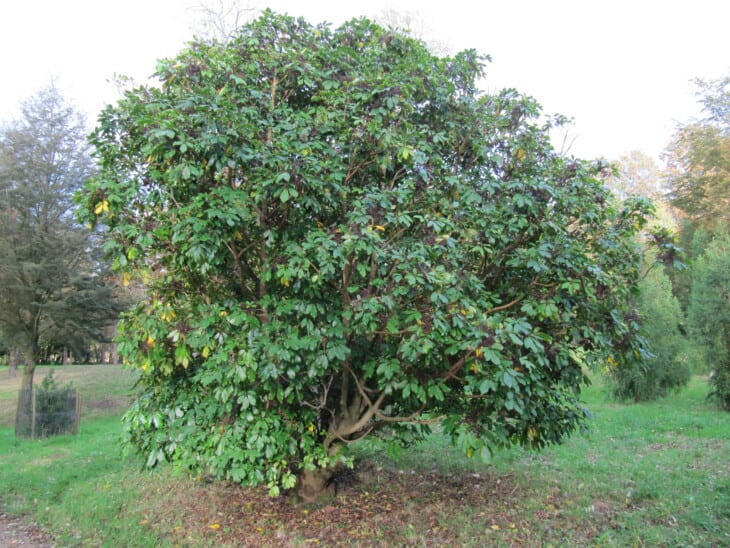
As the name indicates, five finger tree (Pseudopanax arboreus) has leaves consisting of five to seven leaflets. Five finger trees are native to New Zealand, and the Maui name for the five finger tree is whauwhaupaku. The palmate leaf shape is similar to the money tree, but five finger tree leaves have serrated edges. Five finger leaves are leathery and lack the money tree’s shiny gloss.
Five finger trees bear clusters of fragrant flowers in winter through spring and produce clusters of purple to black berries in summer. Five finger flowers are an excellent source of pollen and nectar for bees early in spring. The berries are also an abundant food source for birds. Five finger trees are sure to attract plenty of insect and bird life to the garden.
Five finger trees are fast growing and can reach sixteen feet in height, but are easily pruned to keep the plants smaller and more manageable.
6. Dwarf Umbrella
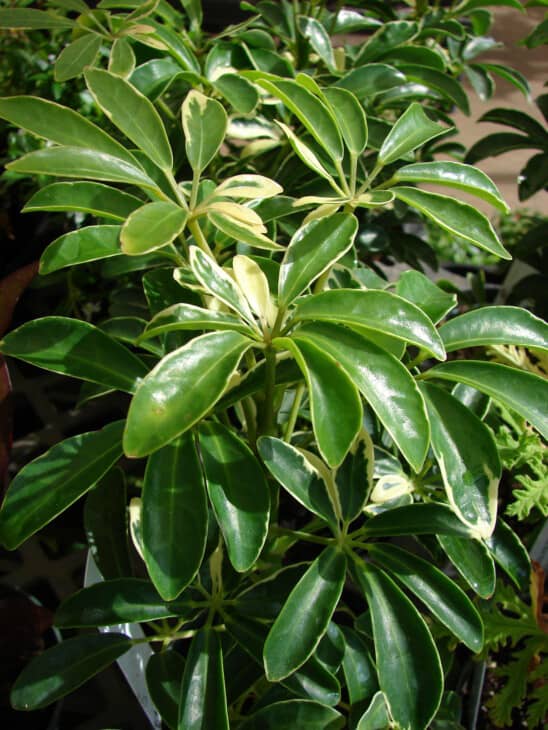
The dwarf umbrella (Heptapleurum arboricola) is also called umbrella shrub, star leaf, or Hawaiian elf. The dwarf umbrella plant is native to Taiwan and parts of China. Dwarf umbrella plants have become naturalized in many tropical regions as outdoor plants. Outdoors, dwarf umbrella shrubs can grow more than twenty feet tall but are easily grown indoors as smaller shrubs or bonsai plants.
Dwarf umbrella leaves consist of seven to nine leaflets arranged in a palmate formation. These leaves are shiny with smooth edges, just like the money tree, but the leaflet points are more rounded. Dwarf umbrella plants have bright green leaves, but variegated varieties with yellow and green foliage are also available.
Dwarf umbrella shrubs bear flower clusters on flower stems called a panicle. The flowers range from green to yellow and produce bunches of berries that start with an orange color and ripen to red or purple. The berries are not edible to humans but will attract birds to the garden in late summer.

